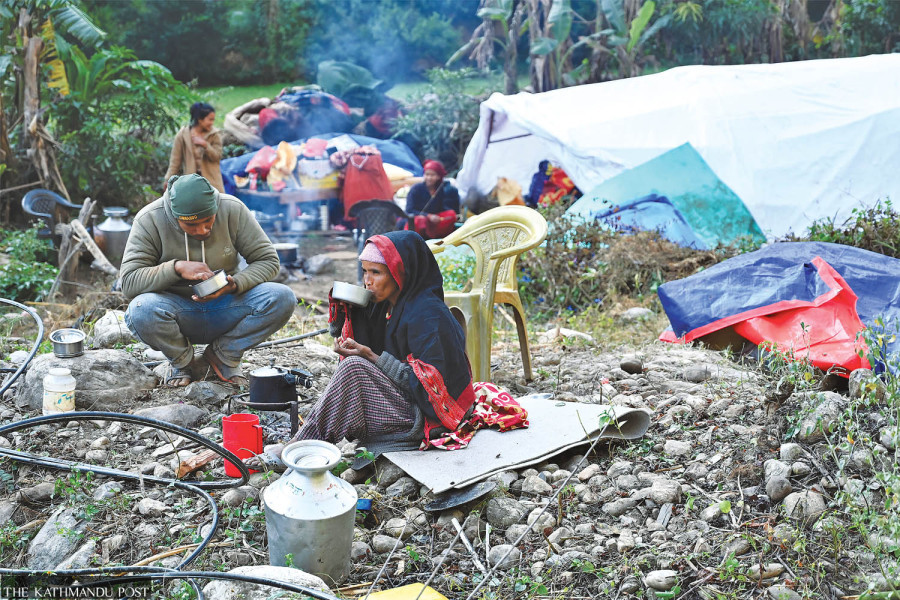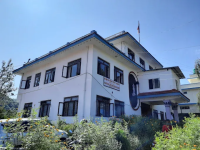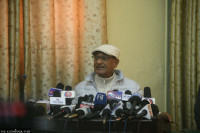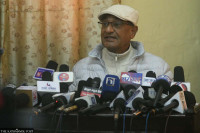National
Health ministry seeks food aid from WFP and UNICEF for distribution in quake-hit districts
Officials warn of high risk of malnutrition among children under five, new mothers and pregnant women in the affected areas.
Post Report
The Ministry of Health and Population has requested two United Nations agencies—the World Food Programme (WFP) and the United Nations Children’s Fund (UNICEF)—for supplementary food to distribute in the quake-hit areas of Jajarkot and West Rukum of the Karnali Province.
Children under five years of age, postpartum mothers and pregnant women in the quake-hit areas are highly vulnerable to getting malnourished, which can be prevented through ready-to-eat supplementary foods, officials said.
“We will finalise the agreement within the next week with those two UN bodies,” said Lila Bikram Thapa, chief of the Nutrition Section at the Family Welfare Division under the Department of Health Services. “Those agencies will provide us fortified food and we will distribute them through our own channels in the quake-affected areas.”
At least 154 were killed, hundreds were injured and thousands displaced in the magnitude 6.4 earthquake that rocked Jajarkot and West Rukum of Karnali Province on November 3. Thousands of people including many new mothers in the quake-hit areas have been forced to spend days and nights under makeshift plastic tents. It is reported that cold-related ailments have claimed several lives in Jajarkot after the earthquake.
“We have still been collecting data on children, lactating mothers and pregnant women in the affected areas. The number of malnourished will be in the thousands,” said Thapa. “Distribution of ready-to-use food items is among the measures to address nutrition deficiency in emergencies.”
Malnutrition is considered a silent health crisis in Nepal. The country has made significant progress in reducing stunting among children under five. Stunting decreased from 57 percent in 2001 to 25 percent in 2022, according to a report of the Nepal Demographic and Health Survey-2022.
Experts say that nutrition status deteriorates in the aftermath of the disasters in affected areas and small children, lactating mothers and pregnant women get hit hard.
Experts say malnutrition also affects children’s mental growth—weakens intellectual capacity, limits productivity in adulthood, and increases vulnerability to certain diseases.
“Lactating mothers, small kids, pregnant women and elderly people are always a vulnerable group, and when disaster strikes, they are the most severely affected,” said Dr Atul Upadhyay, a nutritionist. “Authorities concerned must focus on saving the lives of those people and problems of malnutrition can be prevented by providing them with locally available nutritious foods and warm clothes.”
Besides assessing the nutritional status of the displaced people, authorities concerned must prioritise providing nutritious food, as recommended by experts, to prevent deterioration of nutrition status. They advise providing locally available food instead of spending time and money on fortified foods.
“Local government agencies should be more active and shoulder responsibilities in the aftermath of disasters,” said Upadhyay. “And the issue of nutrition should be included in the disaster preparedness plan. Our disaster preparedness plan looks great on paper, but when it comes to implementation, it falls short.”
Nepal has committed to meeting the United Nations-backed Sustainable Development Goals (SDGs). SDGs, a follow-up on the Millennium Development Goals, aim to end poverty and hunger and all forms of inequality worldwide by 2030, and Nepal has committed to meeting the goals.
The country needs to reduce stunting to 15 percent from the existing 32 percent by 2030 to meet the SDG targets, wasting to four percent from the current eight, underweight conditions to 10 percent from the existing 19, and anaemia to 10 percent from more than 43 percent at present.




 17.12°C Kathmandu
17.12°C Kathmandu












%20(1).jpg&w=300&height=200)

